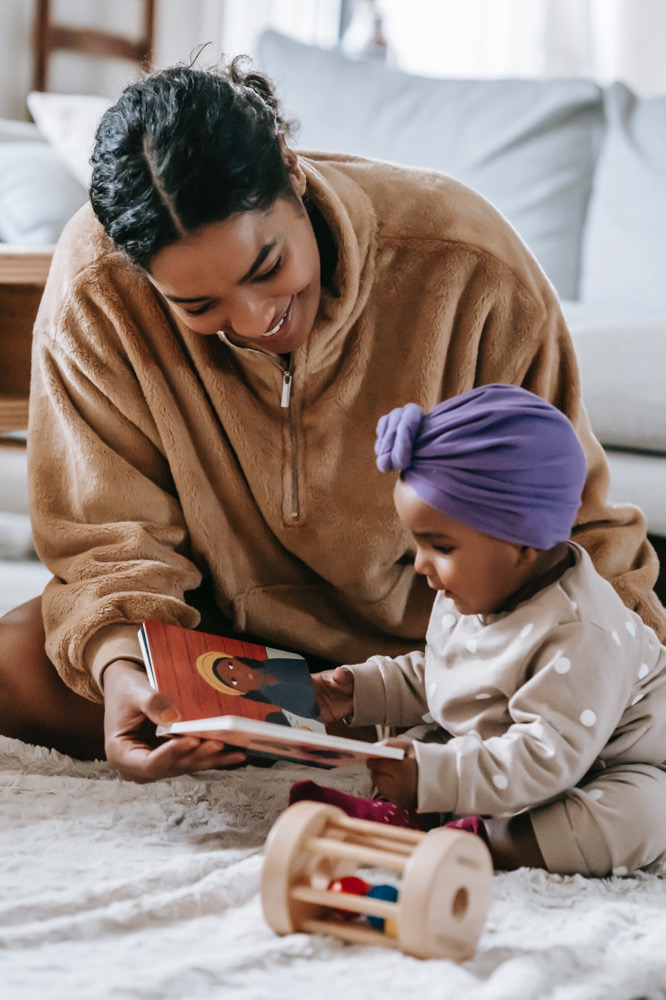Motherhood and Your Hair

Motherhood and Your Hair: Navigating the Changes and Embracing the Journey
Motherhood is a transformative journey that brings with it a myriad of changes, both physically and emotionally. One aspect that many women notice during this time is how pregnancy and motherhood can affect their hair. From changes in texture and volume to postpartum hair loss, understanding these shifts can help you embrace your hair journey with confidence and grace.
Understanding Hair Changes During Pregnancy
1. Increased Hair Growth
Many women experience thicker, fuller hair during pregnancy. This is primarily due to increased levels of estrogen, which prolongs the growing phase of the hair cycle. As a result, you may notice that your hair feels more luscious and vibrant.
Tips:
Enjoy the fullness by experimenting with new hairstyles.
Maintain a healthy diet rich in vitamins and nutrients to support hair growth.
2. Changes in Hair Texture
Pregnancy hormones can sometimes alter the texture of your hair, making it curlier or straighter than usual. These changes are often temporary and may return to their pre-pregnancy state after childbirth.
Tips:
Embrace the change by exploring styles that enhance your new texture.
Use hair care products designed for your specific hair type to keep it healthy and manageable.
Postpartum Hair Changes
1. Postpartum Hair Loss
After childbirth, many women experience postpartum hair loss, known as telogen effluvium. This is a normal process where hair that was retained during pregnancy begins to shed. It usually occurs around three to six months after delivery.
Tips:
Be patient; this phase is temporary, and hair usually returns to its normal growth cycle within a few months.
Avoid tight hairstyles that can put stress on your hair and exacerbate shedding.
Consider gentle, volumizing shampoos and conditioners to help manage thinning hair.
2. Managing New Growth
As your hair begins to grow back, you may notice shorter, wispy strands around your hairline. These "baby hairs" are a sign of new growth and can be styled to blend with the rest of your hair.
Tips:
Use a lightweight styling gel or mousse to tame flyaways and blend new growth.
Incorporate regular trims to keep your hair looking neat and healthy.
Embracing Your Hair Journey
1. Self-Care and Hair Care
Taking care of your hair is an essential part of self-care during motherhood. Setting aside time for regular hair care routines can help you feel more confident and relaxed.
Tips:
Schedule regular hair care routines, such as deep conditioning treatments or scalp massages.
Treat yourself to occasional salon visits for professional styling and care.
2. Celebrating Your Unique Beauty
Motherhood brings about many changes, and embracing these changes is part of celebrating your unique beauty. Your hair journey is a reflection of the incredible journey you are on as a mother.
Tips:
Focus on the positive aspects of your hair journey and celebrate the changes.
Share your experiences with other mothers to gain support and inspiration.
Motherhood is a time of change, and your hair is no exception. Understanding the changes that occur during pregnancy and postpartum, can bring you to embrace your hair journey with confidence and grace.
Motherhood is a transformative journey that brings with it a myriad of changes, both physically and emotionally. One aspect that many women notice during this time is how pregnancy and motherhood can affect their hair. From changes in texture and volume to postpartum hair loss, understanding these shifts can help you embrace your hair journey with confidence and grace.
Understanding Hair Changes During Pregnancy
1. Increased Hair Growth
Many women experience thicker, fuller hair during pregnancy. This is primarily due to increased levels of estrogen, which prolongs the growing phase of the hair cycle. As a result, you may notice that your hair feels more luscious and vibrant.
Tips:
Enjoy the fullness by experimenting with new hairstyles.
Maintain a healthy diet rich in vitamins and nutrients to support hair growth.
2. Changes in Hair Texture
Pregnancy hormones can sometimes alter the texture of your hair, making it curlier or straighter than usual. These changes are often temporary and may return to their pre-pregnancy state after childbirth.
Tips:
Embrace the change by exploring styles that enhance your new texture.
Use hair care products designed for your specific hair type to keep it healthy and manageable.
Postpartum Hair Changes
1. Postpartum Hair Loss
After childbirth, many women experience postpartum hair loss, known as telogen effluvium. This is a normal process where hair that was retained during pregnancy begins to shed. It usually occurs around three to six months after delivery.
Tips:
Be patient; this phase is temporary, and hair usually returns to its normal growth cycle within a few months.
Avoid tight hairstyles that can put stress on your hair and exacerbate shedding.
Consider gentle, volumizing shampoos and conditioners to help manage thinning hair.
2. Managing New Growth
As your hair begins to grow back, you may notice shorter, wispy strands around your hairline. These "baby hairs" are a sign of new growth and can be styled to blend with the rest of your hair.
Tips:
Use a lightweight styling gel or mousse to tame flyaways and blend new growth.
Incorporate regular trims to keep your hair looking neat and healthy.
Embracing Your Hair Journey
1. Self-Care and Hair Care
Taking care of your hair is an essential part of self-care during motherhood. Setting aside time for regular hair care routines can help you feel more confident and relaxed.
Tips:
Schedule regular hair care routines, such as deep conditioning treatments or scalp massages.
Treat yourself to occasional salon visits for professional styling and care.
2. Celebrating Your Unique Beauty
Motherhood brings about many changes, and embracing these changes is part of celebrating your unique beauty. Your hair journey is a reflection of the incredible journey you are on as a mother.
Tips:
Focus on the positive aspects of your hair journey and celebrate the changes.
Share your experiences with other mothers to gain support and inspiration.
Motherhood is a time of change, and your hair is no exception. Understanding the changes that occur during pregnancy and postpartum, can bring you to embrace your hair journey with confidence and grace.

